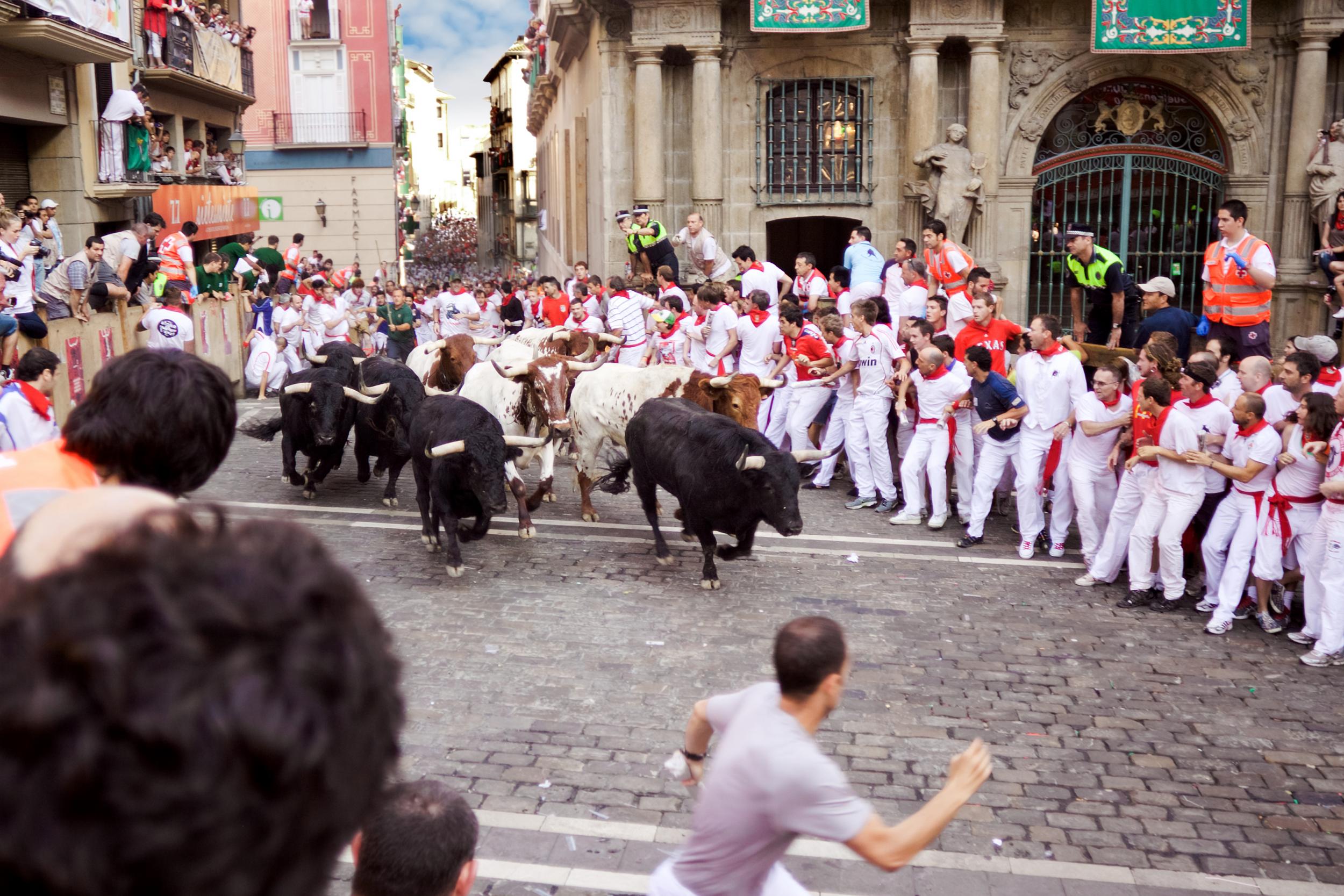Pamplona bull run: How did the unique Spanish custom start and how dangerous is it?
Historic tradition attracts criticism from animal rights activists and has seen fatalities but remains a huge tourist attraction and an extraordinary spectacle
Your support helps us to tell the story
From reproductive rights to climate change to Big Tech, The Independent is on the ground when the story is developing. Whether it's investigating the financials of Elon Musk's pro-Trump PAC or producing our latest documentary, 'The A Word', which shines a light on the American women fighting for reproductive rights, we know how important it is to parse out the facts from the messaging.
At such a critical moment in US history, we need reporters on the ground. Your donation allows us to keep sending journalists to speak to both sides of the story.
The Independent is trusted by Americans across the entire political spectrum. And unlike many other quality news outlets, we choose not to lock Americans out of our reporting and analysis with paywalls. We believe quality journalism should be available to everyone, paid for by those who can afford it.
Your support makes all the difference.This week marks the commencement of the famous Pamplona bull run in Spain.
The traditional festival honouring Saint Fermin is staged every year from 6 to 14 July and sees thousands of tourists descend on the historic capital of Navarre to race through the streets, pursued by the noble beasts. Only the La Tomatina tomato fight in Bunol, Valencia, rivals Pamplona for popularity.
Known around the world since 1926 thanks to Ernest Hemingway’s novel The Sun Also Rises – but dating back to at least 1592 – the event traces its origins to the heyday of bullfighting when animals reared for the purpose in the countryside would be brought to the city and children would leap into their path to show off to one another and boast of their bravery.
The format sees the first six “jandillas” released into Pamplona’s winding, ancient streets at 8am on the morning of the 7 July, with another six set free at the same time for every additional day of the fiesta. They are accompanied by an additional six steers with a further three lagging behind the herd to encourage its progress.
A benediction in praise of Saint Fermin – a third century bishop native to the region martyred by being dragged through the streets of Amiens in France by a bull – is said before the “encierro” – or running of the bulls – begins.
The opening of the pen is announced with the firing of a rocket; a second indicates that the full compliment are loose; a third informs the participants that the first animal has passed through the old city, crossed Town Hall Square and reached the stadium; the fourth that all six have made it and the receiving pen has been closed off, marking the completion of the run.
Each race typically takes no more than three minutes.

Participants weaving their way through the 875-metre route ahead of the charging bulls must be over 18, run in the same direction without goading it and not be under the influence of alcohol - although the prevalence of red wine and sangria mean violations are common. A divorced father who allowed his 10-year-old son to run in 2007 was fined and lost his visitation rights as a result of the boy being spotted by horrified viewers on TV.
Runners typically wear all-white with red neckerchiefs (“panuelo”) and sash belts (“faja”), traditional local costume but also intended to ensure maximum visibility.
Wooden barriers are placed to block off side-streets and alleyways and corral the beasts along the desired route to the bullring where they are later slain by a matador. Spectators gather behind these fences and in the balconies of flats looking down on the spectacle, cheering on the runners and revelling in the excitement.
The tradition has naturally attracted criticism from animal rights activists in recent years – Peta and, more surprisingly, Motley Crue drummer Tommy Lee among the most outspoken – and is of course highly dangerous.
There have been 15 deaths since 1910, with 13 Spaniards, one American and one Mexican killed, the majority as a result of goring.
While an attack by a bull is not always fatal, the threat of tripping on slippery cobbled lanes or being cornered is real and injuries are commonplace, with anywhere between 50 and 100 taking place every year.
Red Cross volunteers are on hand to care for anyone hurt.

Join our commenting forum
Join thought-provoking conversations, follow other Independent readers and see their replies
Comments